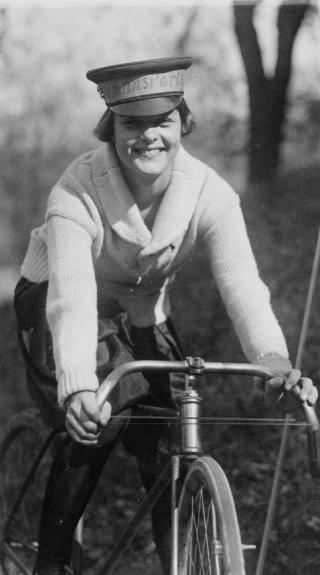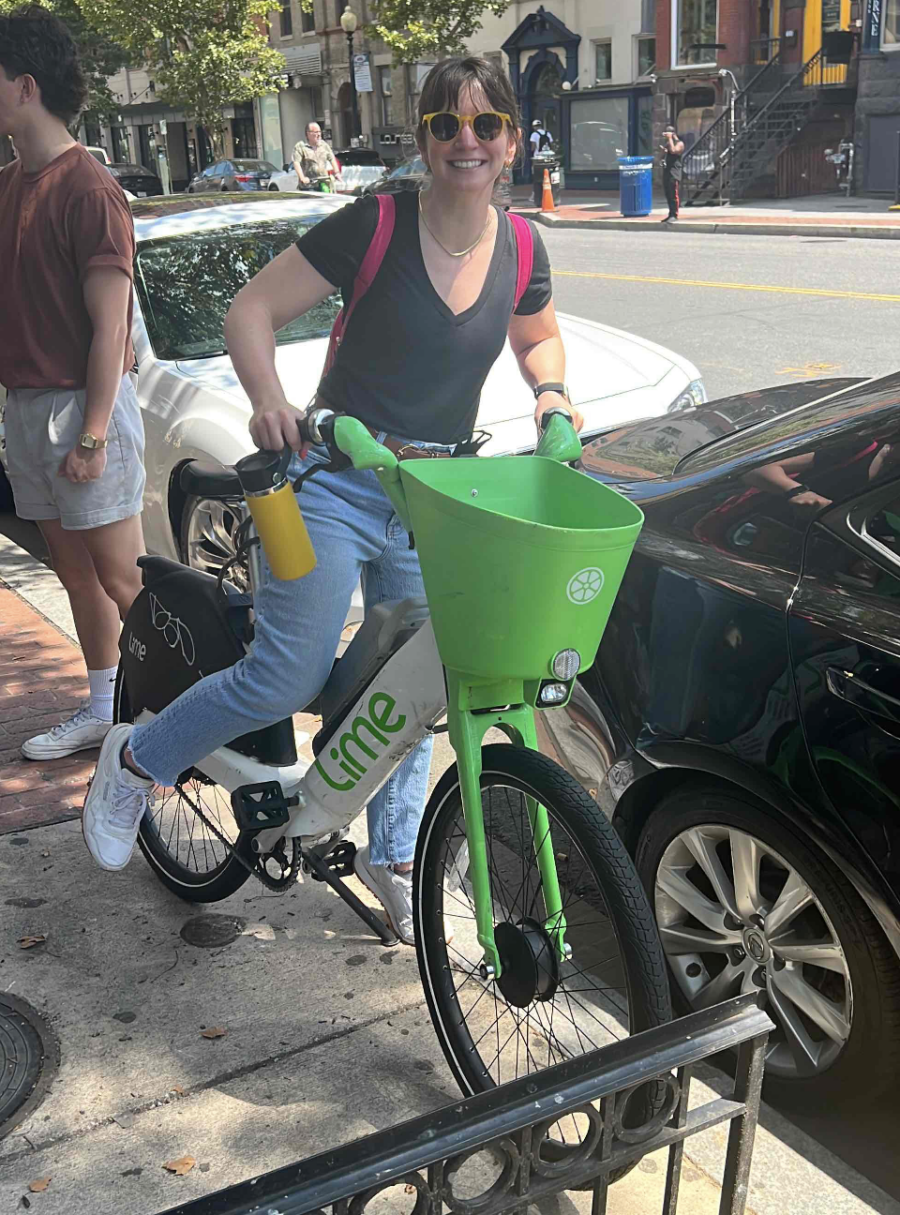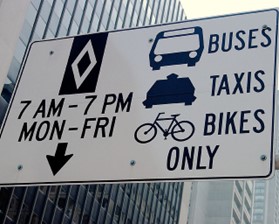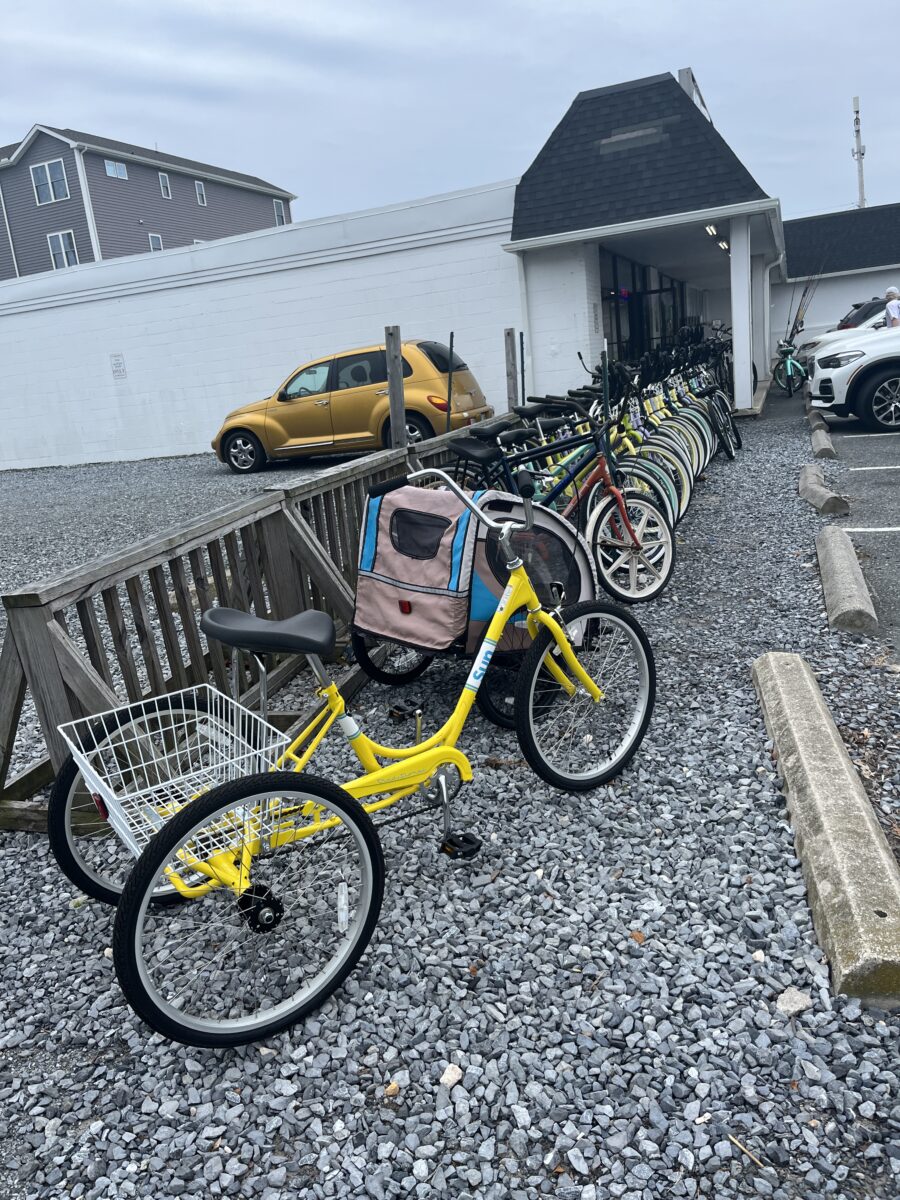This women’s history month, the importance of bicycle infrastructure is cycling through my head. Why? Well, as Susan B. Anthony famously stated, bicycling “has done more to emancipate women than anything else in the world. It gives women a feeling of freedom and self-reliance.”

In the 1890s, the bicycle craze permeated American society when bicycling became popular as both a social activity and as a means of transportation. The popularization of the bicycle was crucial to the women’s movement, serving as a tool for physical and social mobility. Suddenly, women didn’t need to rely on men for everyday transportation, giving them more control over their lives.
The bicycle has played such an important role in women’s freedom and mobility. Yet, today in the US, only about a third of regular bike riders are women. So, I wondered: as transportation planners, how can we make cycling a more attractive travel option for women?
In Our Wheelhouse: Women’s Travel Patterns
Women typically have different travel behaviors compared to men, which may cause barriers to cycling. Rather than commuting directly from home to work, for instance, women are more likely to trip-chain, which means making multiple stops on a single journey. They may need to make a school drop-off on the way to the office or visit a relative’s house on the way home. In general, women take more trips and shorter ones, requiring flexibility, reliability, and efficiency. Bicycling can aid these necessities since, by its nature, the mode encourages traveling on one’s own schedule rather than, say, waiting to catch a bus or living close to transit. One reason I choose to bike in a transit-rich city is because of the flexibility and reliability.

While women certainly aren’t the only people to take non-work trips, women are still responsible for a majority of caregiving and other unpaid labor. These tasks often require traveling with children or carrying groceries, which are simply easier by car or transit. I often stop by the grocery store on my way home from work, which can be challenging on a bike—the weight of groceries can slow down my travel, and if I’m carrying cold items, time is more of a factor. However, biking does allow me to have the freedom to vary my routes and move at my own pace. But overall, biking can still be better for women.
Generally, bike routes are not built with trip-chains in mind. Biking allows people to move from point A to point B without needing to search for parking or plan around a bus schedule, but only if points A and B are convenient to already established bike paths. Offering bike share stations and e-bike incentives can help women (and others) arrive at their location more efficiently than a traditional bike. Another way to encourage women to bike more is creating space for larger bikes (like cargo bikes) at bike parking facilities. Most importantly, I think planners should make a conscious decision to create biking infrastructure around schools, shopping centers, and other non-work locations.
Traffic Safety has Spoke-n
The culture around a particular mode of transportation is also important to consider when planning for it. I’ve noticed that bicycling itself can seem hostile to women: sometimes, I feel unwelcome in what feels like male-dominated cycling clubs and bike shops. Maybe creating cycling groups specifically for women (or mothers) could make women feel less intimidated to embrace a culture of biking. I think that a cultural shift around biking would have encouraged me to start biking sooner!

One concern seems to rise above all others: safety. Living in DC, I ride my bike nearly every day to commute to work, run errands, go shopping, or do recreational activities. I find it extremely convenient in this city for the type of trips that I make. I feel grateful for the ability to cycle, but am also worried about potential dangers, such as being doored or harassed by a driver.
Even though issues of safety impact all bicyclists regardless of gender, women tend to be both more risk-averse and are more affected by safety concerns. For me, safety is the most important factor in making travel decisions. Even though I ride for much of my transportation, I, like many other bicyclists, often take a more circuitous path to ride on protected bike lanes, even if it adds to the travel time. I also do my best to avoid riding at night if the streets are too dark. As you can see, there are ways to ride and optimize safety on the road so women feel safer on their bikes, and planners can help increase safety without affecting budgets, such as installing street lighting and protected bike lanes. My experience supports the research that such infrastructure improvements can increase women’s propensity to bicycle. As a planner, I can only hope these improvements happen soon so that more women, including myself, will feel safe to travel more frequently by bike.
Planning for Gender in Tandem with Planning for Bikes
To attract more women to bicycling, gender needs to be more explicitly thought of in the planning process. While transportation planners have begun to extend the focus beyond traditional commuting trips—such as providing bike storage near grocery stores and including bike share stations in shopping areas—there is still more that can be done to understand how women travel and what we can do to incorporate women’s needs into active transportation improvements.

What if bike share stations offered child seats or trailers to rent? I may be more inclined to haul groceries on a bike if I knew I had easy access to a trailer. What if schools and grocery stores offered more secure bike parking? Maybe more women would run errands via bike. Or maybe planners can advocate for more road diets to decrease the number of cars on the road, making women (and others) feel safer. In several European countries, more bike trips are taken by women, likely due to supportive cycling infrastructure.
Done right, infrastructure and policy improvements can help promote equity in cycling and encourage more women to participate in bicycling. I’m lucky to work at a company that supports these efforts wholeheartedly. You can check Foursquare ITP’s tools that focus on equity to see how we help plan bicycle infrastructure for women and everyone else. I think the future looks bright for woman riding bikes more prominently, and I’ll be at the head of the pack!